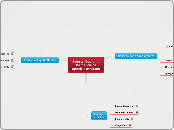Sports Medicine Demands of specific athletes
Children and young athletes
Medical conditions
Asthma
* While asthma may affect performance if not managed correctly, only extreme cases should cause exclusion from participation.* (EIA) Exercise-induced asthma causes the airways to constrict immediately after the ceasation of exercise, leading to an asthma attack. There is more risk in activities such as running when compared to swimming.* Swimming in a warm, moist environment is the preferred form of exercise.* The child should follow and asthma management plan, including the use of prescribed medications where necessary.
Diabetes
* Exercise is of considerable assistance in managing disbetes and although caution is required for some activities, it should not exclude most children from participation.* Pre-game/exercise nutrition is often required to raise blood sugar levels prior to performance. Depending on duration, glucose supplementation may also be required during performance.
Epilepsy
Epilepsy should not exclude children from participation in most sports (except water sports and extreme sports such as rockclimbing and skydiving which should be avoided).
Overuse injuries
Thermoregulation
Appopriateness of resistance training
Female athletes
Eating disorders
* Particularly affects women where low body fat and idealised body shape are expected (e.g. dance, gymnastics and diving).* My result from peer infleunce, media, socail norms and values.* Thinness may be considered when judging some sports (see examples above). In gymnastics, this led to an increase in age before ability to compete (16 years of age).* Prevention methods include focusiing on personal bests, better education in terms of warning signs and using nutritionists and observation of eating patterns.
Iron deficiencies
*Iron deficiency is called anaemia. This results in low haemoglobin levels (< 11gm/100mL of blood).* This limits the oxygen carrying capacity of the affected athlete, thereby decreasing performance in aerobic activities.* Iron deficiency contributes to fatigue and general lethargy.* This issue is prevalent in women due to lower red meat consumption and menstruation.* Exercise-induced anaemia (sports anaemia) is common in females to the heavy demand for iron during intense training. This depletes overall levels. * Cause is speculative and believed to be related to red blood cell destruction and loss through sweat.* Iron levels should be monitored and if found to be low, diet should be modified to increase iron intake. Supplementation should only be considered if this modifaction is not sustainable.
Bone density
* Bone density is directly related to the quantity of calcium in the bones. A lack of calcium causes the bones to become thin and brittle and therefore increase risk of fractures and structural weakening. * Overstimulation of the parathyroid gland causes calcium bleaching (removal of calcium from bone into the bloodstream) and can lead to osteoporosis. * Following menopause, women lose calcium faster than men and may require hormone replacement therapy.* Women are encouraged to eat a well balanced diet and be considerate of the type of activities utilised (if post-menopausal or diagnosed with osteoperosis).
Pregnancy
Exercise during prenancy can be beneficial for cardiovascular fitness, weight control in the later stages of pregnancy and improved muscle tone. * Exercise is not an issue provided that intensity and duration of activity are moderate. * Heavy resistance training and high intensity exercise may be harmful, as it can restrict placental blood flow that can affect the foetus.* Women should exercise in cool conditions and maintain fluid levels to avoid heat stress.
Adults and aged athletes
Heart conditions
* Includes hypertension, previous heart problems (including heart attack) and/or bypass surgery.* Specific exercise programs should be prescribed for anyone in the above group.* Regular exercise can reduce blood pressure, especially when combined with a balanced diet.* Medical clearance should be obtained before commencing an exercise program.* Utilise progressive overload principle and include aerobic activities of moderate intensity.
Fractures and bone density
* See notes on osteoporosis in female athletes section.* Physical activity increases bone mass and enhances bone strength.* Inactivity should be avoided.* Types of activities recommended include:- low impact endurance acitivities, such as walking, swimming and cycling- activities requiring balance, such as aerobics- low intensity strength activities.* Activity should be guided by a specialist in this field.
Flexibility and joint mobility
* Exercise has a positive effect on flexibility and joint mobility in older people.* Programs should be low impact, specific to the individual's limitations and considerate of the condition (e.g. arthritis, aching joints, back pain or tight muscles).
